The following is taken from a compilation of articles written by Phil through the years when he was asked for magazine articles and information for biographical books. They create a pretty good chronology of Phil’s career.
It is interesting for me to look back at my life and see how my destiny was formed. Parents speculate on the future of their children by their youthful interests and activities. My parents allowed me to pursue a wide range of boyhood interests from bug collecting to art. My early interests included drawing, particularly Disney animated cartoon characters from comic books, stamp, coin and insect collecting, model car and airplane building. I was always tinkering with whatever I could take apart and usually not put back together. My Dad was very adept at mechanics and had all the tools necessary to repair everything from the toaster to the car. I was interested and encouraged to help. One of the things that I appreciate about him now was his logical approach that taught me patience and perseverance rather than bad temper and noncommitment. I discovered that long term, complex projects began to hold my interest.
Once, when I was very young, during a family visit to my grandparents, I discovered an old, handmade acoustic guitar in a closet. I recall squirming past relatives to get to that guitar. I couldn’t play it, neither could anyone else, but that guitar did fascinate me. Eventually my grandfather gave the guitar to me and I still have it. That guitar was to be the spark for my entire career.

Phil Kubicki at age 8
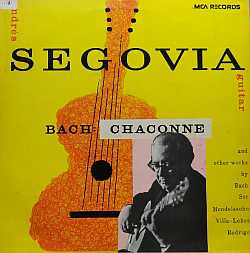
The parents of a schoolmate of mine knew of my interests and introduced me to Ernie Drumheller, a gentleman who would change my life. Ernie owned a production wood shop and his hobby was making classical guitars. Ernie took me under his wing and got me started making my first guitar. I was 15 years of age. It was a classical in the Antonio Torres tradition. Ernie offered a great deal of encouragement and I think he enjoyed teaching me what he could as if he were making the guitar himself. As these were Saturday and summer activities progress was slow, but by 1961 I was skilled enough to feel good about my progress. I made 6 guitars over a 5 year period and actually traded one for a 1931 Chevrolet.
Early in high school, I discovered Andres Segovia and began collecting all his LP’s. Rock and Roll was also a big interest but Segovia was a whole separate thing. I took woodshop classes in all four years of high school.
After I graduated from high school I enrolled in Fullerton Junior College. It was 1963. Fender’s factory was about two miles from the college so naturally I asked for a tour. There were 9 separate side by side buildings, all the same size. The tour really got my blood going. Seeing all those Strats and Teles being manufactured, from start to finish, by so many people, and in final assembly, the sound of electric guitars being tested just filled the air. At some point, I mentioned to the tour guide that I made acoustic guitars. He said that Fender was beginning to set up an acoustic guitar division a mile away, at a place called Missile Way. As soon as I could, I gathered my most recent guitar and went over there to apply for a job.
There, in a lobby with a window into another office was a secretary. She gave me an application which I promptly filled out and gave back to her. A few minutes later Roger Rossmeisl appeared with my application in hand. Roger was a husky, confident man with a heavy German accent. We talked for a minute and then went into his office to look at my guitar. A diploma of some sort, printed in German, was hanging on the wall. Roger explained that it was his Gitarrenbaumeister (Master Guitarmaker) degree that gave him teaching credentials and was from a school in the southern German Alps in a town called Mittenwald. The school taught violin and cello making as well as guitar making. Roger was very gracious as he looked at my guitar and interviewed me. He invited me for a tour of the facility.

Roger Rossmeisl
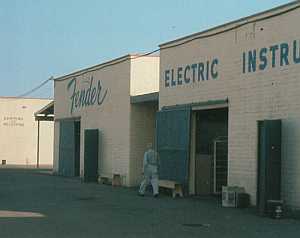
Fender Electric Instruments
As we entered the approximately 12,000 square foot factory space, the first thing I noticed was the beautiful aroma of fresh cut Brazilian rosewood. There’s nothing like it. No one was in the building. Stacks of Brazilian rosewood, mahogany and spruce lumber were neatly lined up along one wall. Some machines were in place and others were yet to arrive. Roger explained that he was designing and tooling up for the Fender acoustic guitars. They are now known as the King and the Concert. He was taking applications but hiring would not take place until January 1964, some 6 months later. He showed me some of the Brazilian rosewood backs and sides and surprised me by giving me a set. He said that I should make a guitar in the meantime. I gratefully took the rosewood and we said good-bye.
I spent the next 6 months making the best classical guitar I could, hoping to impress Roger. I entered a new level of awareness toward craftsmanship after my enlightening visit with Roger. By December 1963, the guitar was finished and I once again drove out to see Roger. We had a strong reunion. He got a kick out of my guitar and complimented me on my effort, amateur as I knew it was. We went out to the factory which had been transformed into a full production facility. A huge bandsaw for resawing lumber into tops and backs, a Ferris wheel like gluing machine for tops and backs, a wide belt sander, upright routers, a finishing department, a buffing department, all an amazing sight for me. Roger finally asked if I would like to work here. I was hired by Roger as one of the first employees to make his newly designed acoustic guitars. I was called for my first day of work on January 27, 1964 when I was 20 years of age.
During my five years as a production worker in the Acoustic Guitar Division, I did not have much contact with Roger so I was surprised when I had a call from him. He knew that I was going to college at night, majoring in Metallurgy, and wanted to ask me some questions about “aging,” a metallurgical term. I didn’t understand why he would call me with such a question, so it seemed kind of odd. I think he was just making contact with me because shortly afterward he asked me to come by for a visit. He had just finished designing the “LTD” and Montego and wanted me to be his assistant in the Research and Development Department for Acoustic and Jazz Guitars. This opportunity was a second new beginning for my career. A few days later I had my own parking place next to all the other R&D staff. This was in late 1968.
My first and foremost responsibility was to build the “LTD” and the Montego jazz guitars. There were only 36 “LTD’s” produced. Other developmental projects that I was involved with included the first rosewood Telecaster for George Harrison used in “Let It Be,” Jimi Hendrix’s last Stratocaster, the Telecaster Thinline, the Starcaster, the Mod and Rocker Guitar, the electric violin, the Songwriter acoustic guitar, the 3 bolt neck, materials testing and problem solving. Some of the projects we developed were never marketed, but we were always trying something.
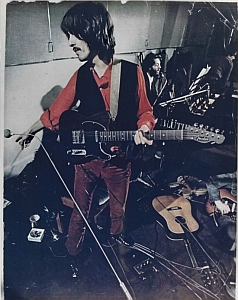
George Harrison and the Rosewood Telecaster
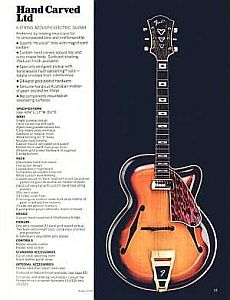
These were great years for me. I held a position as the craftsman who made the projects designed by Roger and the Staff of R and D. The people around included George Fullerton, Freddie Tavares, Gene Fields, Seth Lover and an occasional visit from Leo Fender. The department was housed in “Building 3,” in one of the 13 original Fender buildings. Roger had set up a nice woodworking facility with all the machines necessary for manufacturing the “LTD.” There were two large imported German workbenches with 5″ thick solid maple tops with huge built-in vises specially made for violin, cello, and guitar making, etc. Fender still has those workbenches. We had a buffer, edge sander, shaper, jointer, spray booth, bandsaw, table saw and a whole host of hand tools. There was a North Star carving machine for carving tops and backs for “LTD’s.” While the title was “Acoustic Guitar Research and Development,” the department actually did much more than that and in fact, was used for the majority of any prototype that required woodworking – we always seemed to have a special project going on the side. I worked for and around Roger for nine years and was with him on his last day at Fender.
Then in 1971 I was faced with a choice. CBS bought Fender and things were changing. Roger was let go and moved back to Germany. The “LTD” and Montego were dropped from production. I was retained by Gene Fields for the last project of my tenure before the department was closed – the Starcaster. After that I was offered a position back in the Production line. Pondering the situation, I stepped out the back door of Building 3 on Raymond Avenue and couldn’t see past the last building because of the smog. That’s when I decided to move, with Santa Barbara eventually becoming my new home.
I bought a house in the woods that had a workshop. I arrived with a classical guitar I had already completed while I was living in Whittier.
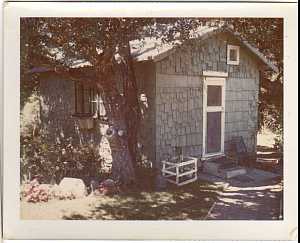
Workshop on Paradise Road
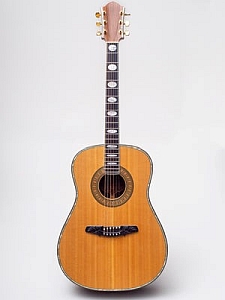
Philip Kubicki Acoustic SN 1
With my move to Santa Barbara complete I continued building acoustic guitars while also doing guitar repairs alongside Seymour Duncan at Jensen Guitar and Music Company. By 1974 I had completed six more distinctively different steel string acoustic guitars. All of them feature a unique bridge with individual string saddles that are fully adjustable for perfect intonation. I researched a patent application and a patent search was performed. The patent attorney summarized the findings by saying that while I would be free to use the bridge design without fear of infringing on any existing patents, it would not be patentable for several reasons including earlier patents dating back to 1890. I thought of this bridge as something that others could use or modify their instruments to use, so I documented its design and use instructions.
Improving on guitar design continued to be my life’s work. In 1978 I married Carla Collins (Clark), who is still my business partner. We rented a building and formed “Philip Kubicki Technology,” making Fender style bodies and necks, and custom guitars including the baseball bat guitar commissioned by John Fogerty for his Centerfield album and still played at concerts today. We also added the short scale mini “Arrow” and “Express” guitars to our product line from late ’81 to early ’85, all the while working on a new bass concept.
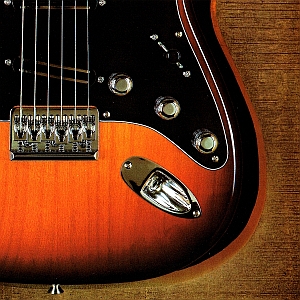
Custom Guitar
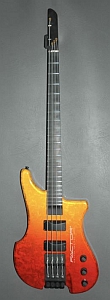
In 1985 we introduced the Factor Bass guitar line. The first production model was released in January 1985. In February 1985 John Taylor of Duran Duran played his Ex Factor 4 bass in the band’s appearance on Saturday Night Live which boosted interest in the instrument. Stuart Hamm, winner of the Bass Players’ Best Bassist in both jazz and rock gave more credence to the instrument. Worldwide recognition began when Vail Johnson, playing in Kenny G’s band, toured internationally playing his Ex Factor 4 bass. By this point, production of the Factor bass could not meet demand. In 1988, a licensing agreement between Kubicki and Fender Musical Instruments was established for the manufacture and distribution of the Factor bass by Fender that lasted until 1991. During this period, the main emphasis was on the development of additional guitars for the product line. The Key Factor 4 and 5 string basses and a 5 string Factor bass were all delivered to Fender but never put into production. As soon as the Fender contract ended Kubicki was immediately back in production selling its Factor bass line.
Final Note — Since Phil’s passing in 2013 we have continued making the Ex Factor 4 bass. Made in the USA and sold factory direct, we are proud to carry on with his legacy.